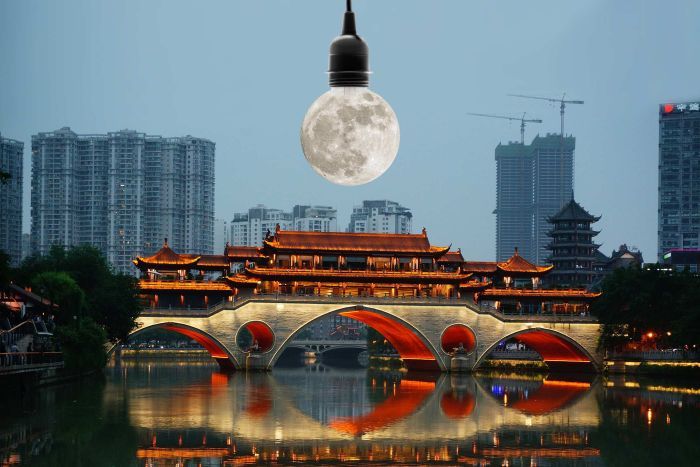China is reportedly in the process of creating an artificial moon that would be bright enough to replace the streetlights in the south-western city of
China is reportedly in the process of creating an artificial moon that would be bright enough to replace the streetlights in the south-western city of Chengdu by 2020 and by 2022, to increase the number by two. The illuminated satellite would designed to complement the moon at night and this could save hundreds of million of dollars a year in electricity costs. The illuminated satellite is said to be eight times brighter than the real moon and forms part of the country’s growing ambitions in space.
The moons made from reflective material like a mirror are expected to orbit at 500 kilometres above the Earth and light up an area with a diameter of 10 to 80 kilometres. Wu Chunfeng, chairman of Chengdu Aerospace Science and Technology Microelectronics System Research Institute Corporation which developed the project, said the illuminating satellite would provide a “dusk-like glow”.
“The satellites’ brightness and service time are both adjustable, and the accuracy of the lighting can be controlled within tens of metres,” Mr Wu said.
Mr Wu added the three artificial moons would operate alternately in order to significantly reduce infrastructural electricity consumption, especially during winter. Mr Wu said lighting from the artificial moon covering 50 square kilometres in Chengdu could save about 1.2 billion yuan ($240 million) in electricity costs every year. It could also be used to light up areas experiencing power outages caused by natural disasters such as earthquakes, he said.
Despite the economic benefits, many on Chinese social media platform Weibo were concerned with potential negative effects such as how it would impact sleep and how much the project would cost.
State run media outlet, Xinhua reported that the idea for the man-made moon originated from a French artist who imagined hanging a necklace made of mirrors in the sky to light up the streets of Paris at night.
